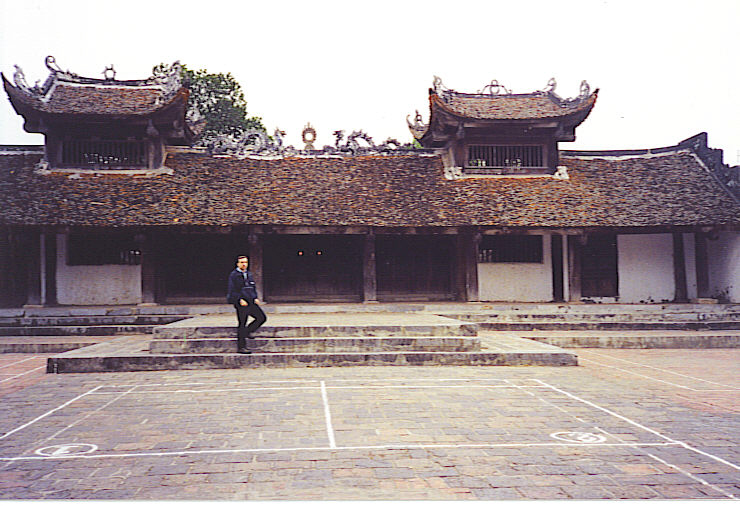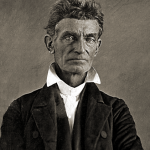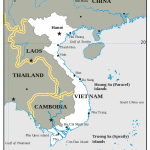 I admit that I grew up a rather sheltered child in a small New England town. After many years where world travel was defined as an occasional weekend jaunt a stone’s throw into Canada, I suddenly found myself flying halfway around the world to Vietnam. And not just any place in Vietnam – Hanoi, the former capital of the Communist North that became the new capital of the reunified Socialist Republic of Vietnam. To provide even more perspective, this was in late 2000, before the United States opened up trade relations and long before Vietnam joined the World Trade Organization to become part of the modern world. It was still the period where memories of the “American War” were still toggling around in the minds of every surviving 50 year old male. Yes, I went to Hanoi before going to Hanoi became cool.
I admit that I grew up a rather sheltered child in a small New England town. After many years where world travel was defined as an occasional weekend jaunt a stone’s throw into Canada, I suddenly found myself flying halfway around the world to Vietnam. And not just any place in Vietnam – Hanoi, the former capital of the Communist North that became the new capital of the reunified Socialist Republic of Vietnam. To provide even more perspective, this was in late 2000, before the United States opened up trade relations and long before Vietnam joined the World Trade Organization to become part of the modern world. It was still the period where memories of the “American War” were still toggling around in the minds of every surviving 50 year old male. Yes, I went to Hanoi before going to Hanoi became cool.
It was in these novel surroundings that my first taste of world travel gave me some of the fondest memories that remain with me today.
Bigger than I expected, Hanoi itself was incredibly busy. Thousands of people on motor scooters and bicycles crowded every street. Many of them wore scarfs over their mouths and noses because the air was so polluted. As I rode around town on my Xe om (a kind of motor bike taxi), it was interesting to contrast the many tiny streets teeming with people doing business on the sidewalks with the ornate mustard-yellow official buildings left over from the many years of French occupation. The mausoleum of Vietnam’s revered former leader Ho Chi Minh (called “Uncle Ho” by the locals), had a prominent place in a large square. Usually visitors can see his preserved body there, but at the time of my trip he was in the middle of an official face-lift, so to speak, so a visit to the adjacent museum had to suffice. Within its halls I wandered into a back room where local musicians played traditional Vietnamese instruments and sang haunting melodies. After the show one attractive musician handed me, the lone westerner in the small room, a ravishing red rose and a seductive smile.
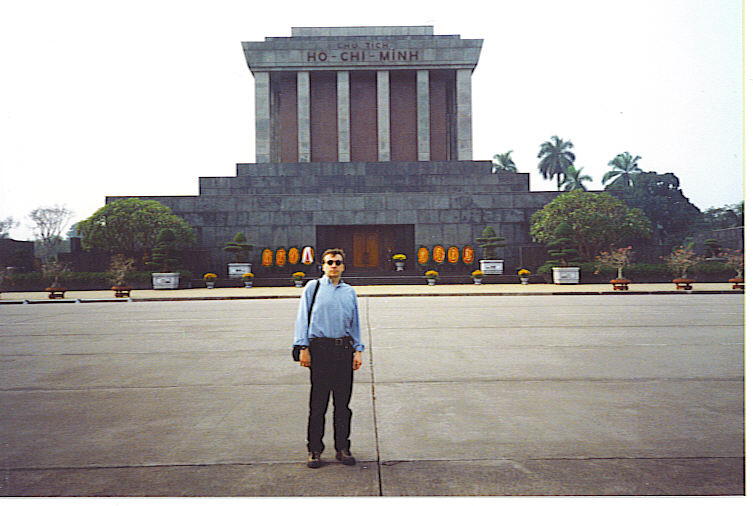
One interesting feature of Hanoi was that shops were clumped by item. By this I don’t mean just that each store sold only one type of item; I mean all the stores on entire streets sold only one type of item. In the US the norm is to find strip malls with one drug store, one shoe store, one clothing store – one of each type of item you might want to buy on a single trip. In Hanoi, one street was dedicated to selling shoes and every alcove on that street sold shoes and nothing but shoes. Other streets were designated to sell coats or silk or “gifts for the tourists.” If you didn’t like one store, you merely walked next door. To this day I still don’t completely understand the concept but I can say that I feel the warmth of the pullover jacket I purchased there.
On another street I ordered three silk shirts. The proprietor of the shop let me pick the colors from a room stacked high with bolts of the finest silk, then measured me every which way you can possibly measure a man’s upper torso. This was late one afternoon. After lunch the very next day I returned to find three perfectly handmade silk shirts that fit like they were made for me. Which of course they were. Overnight. I don’t recall how many Vietnamese dong the shirts cost me, but I do remember that it was equivalent to about $20 each.
I learned a lot while in Hanoi, but what really amazed me was the warm welcome I received from the people. Well, at least the ones that weren’t trying to charge “the rich American” three times the price paid by the locals. In my next post I’ll have more on the people – and the food – of Hanoi and an incredible tea party I had in a village outside the city. You won’t want to miss it. See Part 2 here.
More on my Travels.
Check out my Goodreads author page. While you’re at it, “Like” my Facebook author page for more updates!
David J. Kent is the author of Lincoln: The Man Who Saved America, scheduled for release July 31, 2017. His previous books include Tesla: The Wizard of Electricityand Edison: The Inventor of the Modern World (both Fall River Press). He has also written two e-books: Nikola Tesla: Renewable Energy Ahead of Its Time andAbraham Lincoln and Nikola Tesla: Connected by Fate.
Follow me by subscribing by email on the home page. Share with your friends using the buttons below.
Like this:
Like Loading...
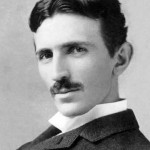 Today marked a milestone in the production of my forthcoming book, Nikola Tesla: The Wizard of Electricity. I received a check. Receiving money in the mail is always a good thing (at least to most people) and this was no exception. After a bit of a delay due to Hurricane Sandy and a slew of holidays the publisher finally released the second half of the “advance on royalties.” My agent, Marilyn Allen of Allen O’Shea Literary Agency passed along the proceeds. As they say on the extremely dignified professional author circuit – Woo hoo!!
Today marked a milestone in the production of my forthcoming book, Nikola Tesla: The Wizard of Electricity. I received a check. Receiving money in the mail is always a good thing (at least to most people) and this was no exception. After a bit of a delay due to Hurricane Sandy and a slew of holidays the publisher finally released the second half of the “advance on royalties.” My agent, Marilyn Allen of Allen O’Shea Literary Agency passed along the proceeds. As they say on the extremely dignified professional author circuit – Woo hoo!!


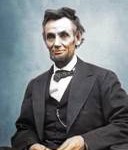 This delightful book published in 1947 is considered a classic in Abraham Lincoln literature, and is fairly rarely found on the book market. The subtitle “The Store that ‘Winked Out,’” is in reference to Lincoln’s famous quote about how at one time he was a partner in a general store and that it sort of fell out of existence (winked out). Lincoln’s time as a storekeeper is generally given short mention in the big full life biographies of him, and usually to state that Lincoln’s partner died a drunkard and Lincoln, in his famous honesty, took on and eventually paid all debts.
This delightful book published in 1947 is considered a classic in Abraham Lincoln literature, and is fairly rarely found on the book market. The subtitle “The Store that ‘Winked Out,’” is in reference to Lincoln’s famous quote about how at one time he was a partner in a general store and that it sort of fell out of existence (winked out). Lincoln’s time as a storekeeper is generally given short mention in the big full life biographies of him, and usually to state that Lincoln’s partner died a drunkard and Lincoln, in his famous honesty, took on and eventually paid all debts.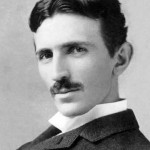 As
As 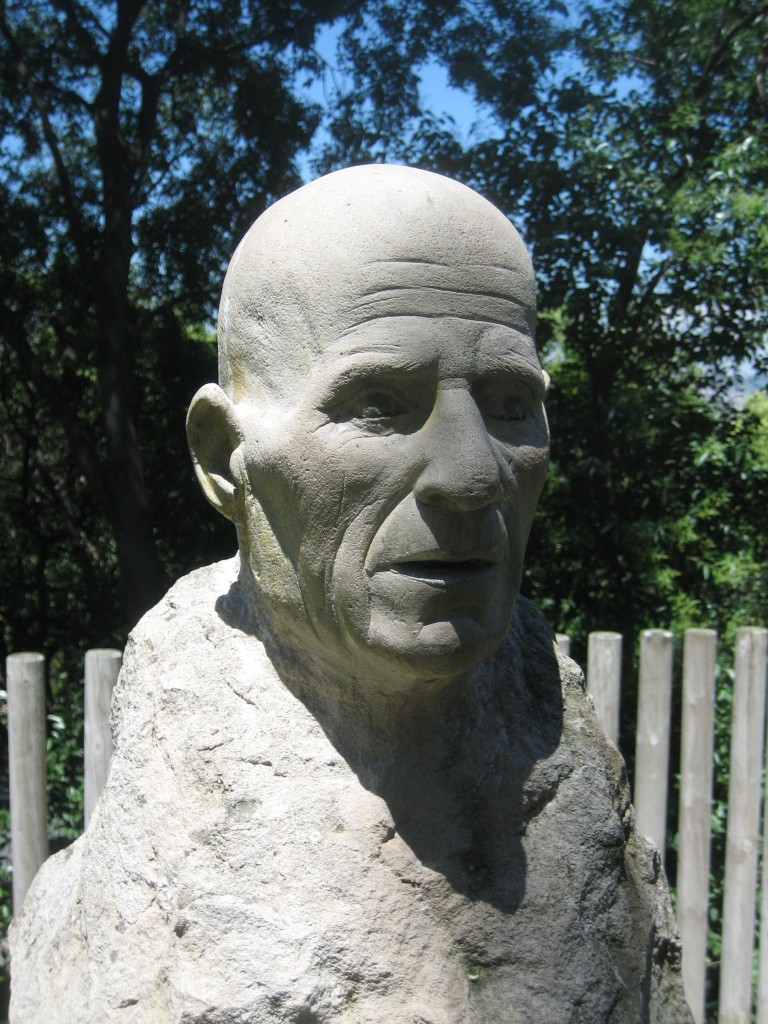
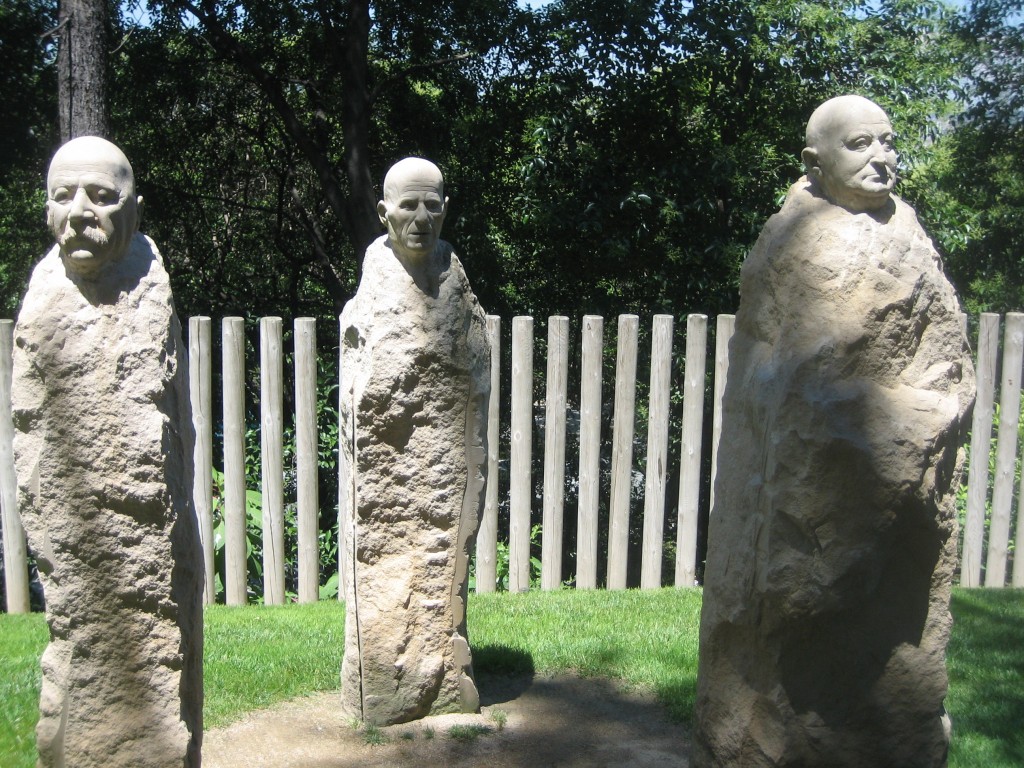
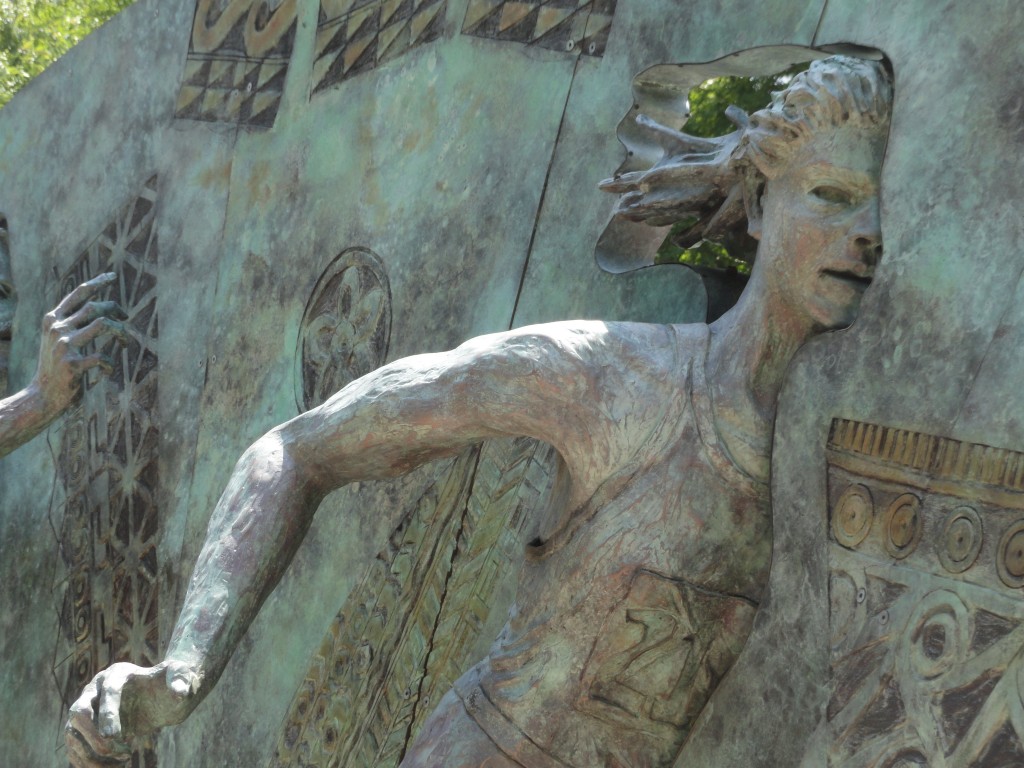

 In my last post I reminisced about my first real traveling experience out of the USA – to
In my last post I reminisced about my first real traveling experience out of the USA – to 